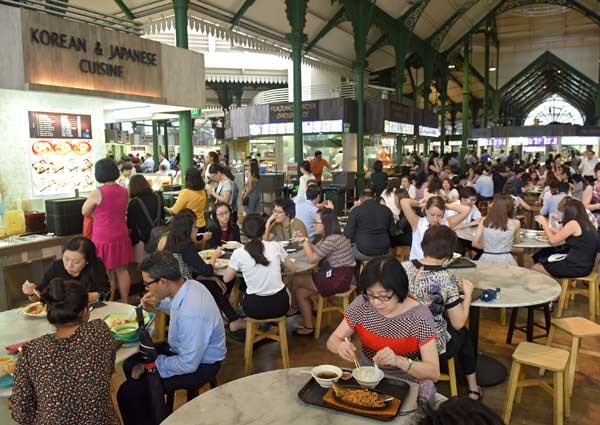3 things that might need to change before Singaporeans are willing to pay more for hawker food


Singaporeans are only too happy to fork out $20 for Eggs Benedict at some hipster cafe. But when it comes to hawker food, an increase in $0.50 is enough to get people grumbling.
Despite the fact that the cost of just about everything except hawker food and lower income wages has been going up like crazy over the years, Singaporeans are still clinging to the hopes that hawker food will remain cheap forever.
This is obviously not realistic. New hawkers are no longer entitled to the subsidised rent that their predecessors were, and to make matters worse the trade seems to be dying out.
So what will it take to change Singaporeans' mindset? Here are three factors to consider.
Environment
Hawker centres do have a certain charm and an ambiance that overseas Singaporeans long for when they're far from home.
But the reality is that this is an environment that is neither luxurious nor stylish, and often uncomfortable.
People pay $20 for overpriced eggs at hipster cafes not because of the food itself, but because they get to sit in an Instagrammable interior and feel cool for 2 hours.
On the other hand, nobody is going to pay the same amount to sweat it out at a hawker centre, queuing for a bowl of food they have to carry by themselves on a tray to a table they've choped with a tissue packet.
Awareness
Singaporean hawker food has gained a bit of international attention, with celebrities like Gordon Ramsay and Anthony Bourdain waxing lyrical about the hawker scene. Not to mention the recent awarding of Michelin stars to restaurants that you wouldn't ever consider "fine dining".
The trouble is, many Singaporeans themselves do not really recognise the value of a well-made bowl of, say, fishball noodles.
People don't realise that at the very best fishball noodle stalls, the fishballs and fishcake are made from scratch using fresh fish.
This takes a lot more effort than the industrial fishballs served up at the mediocre fishball noodle stalls, manned by foreign labour, in chain food courts.
Yet because crappy food court stalls charges $3, people think all fishball noodle hawkers should charge only $3.
Branding and marketing
People will gladly fork out $15 for bingsu or $25 for a bowl of Japanese ramen, yet the Michelin-starred Hill Street Bak Chor Mee stall hasn't raised its prices.
In many Singaporeans' minds, anything Japanese, Korean, French, Italian or hipster is "cool" and of high quality, and therefore worth paying for. In truth, many of these so-called foreign eateries serve up food that's inferior in quality, and are often set up by Singaporeans themselves.
The difference is that these restaurants are so well-branded and marketed that people are willing to pay more for their products.
Hawker food, on the other hand, has always had a reputation for being cheap.
Even local dishes that are now served up at chain eateries with shopping mall branches (eg. Ya Kun Kaya Toast) can only be sold at a relatively low price, simply because people won't pay more for this type of food.
This has nothing to do with the actual quality of the food-the best char kway teow in Singapore is probably of better quality and ingredients than a bowl of Ajisen Ramen, yet costs a fraction of the price.
Truth be told, Singaporeans' willingness to pay for hawker food has little to do with the quality of the food or the effort that goes into preparing it.
It has to do more with the fact that they're eating in an unglamorous hawker centre, and paying for something which isn't marketed as a chic product. The question is, is that fair to hawkers, and should quality hawker food be priced accordingly?
The higher prices might gall consumers, but in the long run it might be necessary to ensure talented and motivated hawkers continue to enter the trade, and that we don't all end up eating bland food court versions of the dishes we once loved.